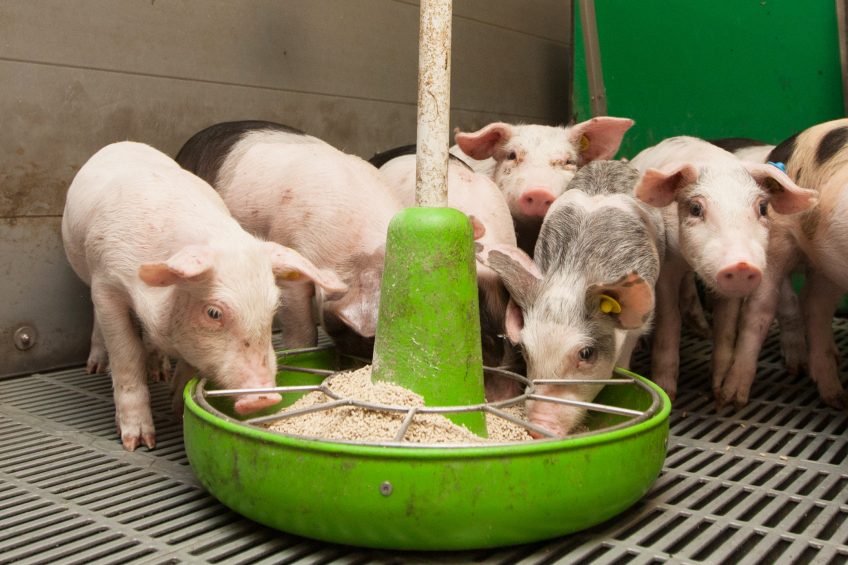The synergistic effect of antibiotic alternatives

The anti-inflammatory activity of antibiotic alternatives can be enhanced in a synergistic fashion by combining them with low doses of fatty acids, essential oils and plant extracts, a new study suggests.
Excessive use of antibiotics over the last few decades has led to the current legislation whereby antibiotic use in animal production should be rationalised. As a first step, Antibiotic Growth Promoters (AGPs) were banned from use within the EU. Use of non-antibiotic growth promoters has been rising as a result of the pressure to maintain a cost effective and economical animal production. Due to consumer demand, such pressure escalated to total reduction of antibiotic use in farm animals destined for human consumption.
Exploring synergistic activity
It is critical to develop cost effective antibiotic alternative strategies to ensure the long-term sustainability of animal production. Although extensive research has been carried out on ingredients that exert antibacterial effect individually, less work has been done to understand how multiple ingredients may work in combination.
Combination of different ingredients has demonstrated synergistic activity. Ideally, alternatives to AGPs should have the same beneficial effect as AGPs. Recent findings demonstrate that controlling and reducing inflammation are the main mechanisms behind the growth promoting activity of AGPs, which explains the consistent effect of AGPs compared with the varying effects found in some alternatives. Therefore, it is reasonable to state that effective growth promoters must be inhibitors of inflammatory response.
Antibiotic alternatives
A combination of different anti-inflammatory compounds may be the most promising method to substitute antibiotics in animal feed. There are 3 major reasons:
- antibiotic alternatives fail to cover all the beneficial effects that antibiotics show;
- there is a synergistic effect among different alternatives that will reduce the effective dosage required (e.g., organic acids and essential oils);
- the host immune response should be enhanced with an integrated approach that will completely replace antibiotics.
Several recently published studies have shown that the combined use of different antibiotic alternatives has better effects on the performance and health of animals when compared to single components. However, the literature available on the ability of these combinations to suppress the inflammatory response is relatively scarce. In the current study, the single and combined anti-inflammatory activity of 3 major non-antibiotic AGP alternatives; fatty acids, essential oils and plant extracts were evaluated in an in-vitro model.
Testing anti-infammatory activity
Lumance (Innovad, Belgium) is a complex product, combining slow release and protection technologies ensuring that fatty acids, essential oils, plant extracts and anti-inflammatory compounds and polyphenols are delivered in a gut active way for a powerful and effective anti-inflammatory control. The anti-inflammatory activity of 3 main ingredients, fatty acids (FA), essential oils (EO) and plant extracts (PE) individually (similar doses as used in Lumance) and in a commercial mixture (Lumance) was tested using the RAW 264.7 assay, essentially as described by Wu et al 2003.
Briefly, the monocytic murine cell line RAW 264.7 grown in cell-culture flasks in Dulbecco’s modified Eagle’s medium until 70-80% confluence, and then scraped off, resuspended in the same medium and seed into a ninety-six-well plate (100μl/well) with a cell density of 1×106 cells/ml. Then, 50 μl/well of FA, EO, PE (similar dose as used in Lumance) and Lumance were added and incubated for 4 h at 37°C. In the control group, 50 μl/well of medium was added without any additives.
Subsequently, 50 μl of medium or 50 μl of medium containing lipopolysaccharide (LPS; 50 ng LPS/ml) were added. Then, 100 μl of medium were taken and pipetted into another ninety-six-well plate. The inflammatory response was measured by the production of NO2-. NO2- production was measured with Griess reagent using a serial dilution of NaNO2 as a standard.
The benefits of a combined effect
The addition of FA, EO, PE alone (with the same concentration as used in the product) did not show any significant influence on reducing the nitric oxide (NO) production while the combination of these compounds had a significant effect on reducing the NO production. Figure 1 shows the measured reduction in NO production by these 3 ingredients and the sum of them compare to the whole mixture. Although the results showed that these 3 compounds moderately lowered NO production and inflammation, their combination was more effective.
Future in vivo animal studies are needed to help translate these results to real practice. In conclusion, the potential benefits of using a combination of different anti-inflammatory compounds could be quite obvious. Hopefully, a greater chemo-preventive effect could be achieved by compounds targeting different signalling mechanisms.
References available on request
Authors: Alireza Khadem, Jamal Al-Saifi, Ben Letor, Stephan Bauwens and Markella Al-Saifi, Innovad Belgium and Niek Sanders, Ghent University


